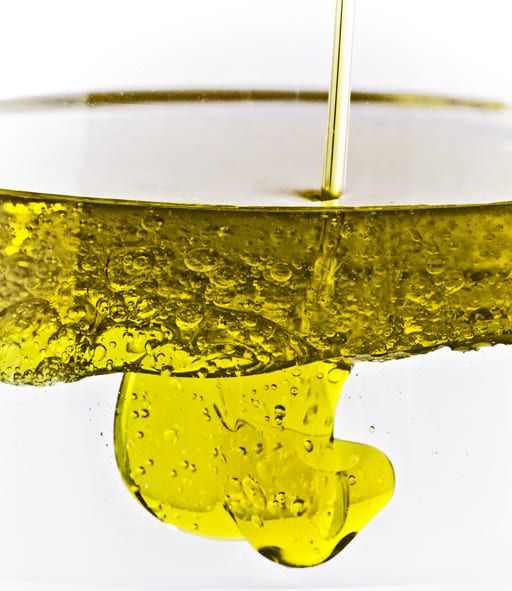How to choose your olive oil ?

June 23, 2017
What’s better in summer than a good tomato-mozza drizzled with olive oil? But, for that, the olive oil needs to be deliciously fruity and perfectly aromatic. Want to know how to choose it? We’ve done the research for you !
Olive Oil: A Matter of Variety
Choosing an olive oil isn’t about the aesthetic of the bottle or even the “first cold press” (which is now referred to as cold extraction). Choosing olive oil is first and foremost a matter of variety. “When you buy wine, you don’t just pick any bottle. Depending on what you like, you’ll go for a Burgundy, a Loire… For olive oil, it should be the same: you go for a particular variety of olives,” explains Alexis Muñoz, olive oil producer.
However, to do this, the labeling of the olive harvest location should be clear. While it’s mandatory to list the origin, it is often vague: “Olive oil originating from the EU” means olives from Italy, Spain, France… or “Olive oil originating from the EU and non-EU countries” means olives from all around the Mediterranean basin. “This is the case with most supermarket oils, which mix oils from various countries and of varying qualities,” making it impossible to know which variety you’re getting.
Yet, the variety is what gives olive oil its uniqueness, its typicity. “When you taste a monovarietal oil (made from a single variety of olive), you truly understand what olive oil is.”
Favor Small Producers
What about AOP or IGP oils? These labels guarantee a specific geographic origin and production method. There are over a hundred in the EU, with 8 in France. However, “it’s not a guarantee of quality, as most of them are blends and not monovarietal,” emphasizes Alexis.
The best way to get a quality olive oil, according to him, is to go directly to the producer (whose name is on the label). However, don't assume that a small producer’s oil will always be expensive. On the contrary !
Olive Oil: A Matter of Fruitiness
Depending on when the olives are harvested, the oil will have a different fruitiness. Based on your preferences or the recipes you're using, you'll lean toward one or another.
Green fruitiness : Olives are harvested before they ripen, just before they turn purple. It has the scent of tomato plant, green pepper. Herbaceous, slightly bitter, and vibrant, it has a little pepperiness that “makes you cough when you taste it by the spoonful,” says Alexis. A delight on fresh cheese, goat cheese, or mozzarella.
Ripe fruitiness : The olives are harvested at perfect ripeness. Richer, softer, rounder, it has more of an artichoke, almond, or apple flavor. Perfect on mashed potatoes or fish—a real treat!
Matured or overripe olive oil : Black olives are fermented before being pressed. This ancient method, typical of the Mediterranean basin, creates a unique flavor of mushrooms and forest floor. Because of this "defect," it cannot be classified as extra virgin and is labeled simply as virgin. However, its quality is not lower—in fact, it’s the opposite!
Olive Oil: A Matter of Packaging
Alexis Muñoz insists that opacity is one of the key factors when purchasing. “Since the label states that olive oil must be kept away from light, how can a producer pack their oil in a transparent glass bottle?” he points out.
In stores, olive oil is often left exposed to light from neon signs for several weeks or even months. “I once tasted a high-end, very expensive oil… It was rancid because it had been sitting in a glass bottle on the shelf for months!” Buy olive oil packaged in an opaque container, and always check the production date.
The Best Before Date (BBD) of Olive Oil
The main enemy of olive oil is time. It doesn’t age well and should generally be consumed within 18 months of bottling. However, “many oils offered for sale are blends of different harvests,” laments Alexis. Instead, look for the harvest date on the label. This rare indication, when present, guarantees the freshness and quality of the oil.
For tasting, do like Alexis: eat it every morning on your toast instead of butter! “It’s good for the energy!” he jokes, hand on heart. Discover also 15 irresistibly fragrant recipes using olive oil.
IN SHORT
- Prefer a monovarietal oil, from the variety of olives and the fruitiness that match your tastes and desires.
- Buy olive oil packaged in an opaque bottle, with a label that at least shows the producer's name and the BBD.
- Taste it! After all, it's the best way to choose an olive oil!
Article by CuisineActuelle – Aurélie Godin
Read more

Now it’s the Arbequina’s turn!
Our Arbequina olives have reached their perfect ripeness.
Read more

Alexis Muñoz X Maison Sarah Lavoine
Our collaboration between Maison Sarah Lavoine and Alexis Muñoz is making a big comeback!
Read more

Upgrade to the 18:1 plan!
No need to think about it — your favorite olive oil is delivered straight to your door.
Read more
